

Ogden, Utah - May 14, 2025
Acceler8 Wasatch 2025, held May 13–15 at the historic Union Station in Ogden, Utah, brought together entrepreneurs and leaders from industry, government, and education to chart the future of Utah’s defense and innovation economy. The event was sponsored by the Northern Utah Economic Alliance, Weber State University (with emphasis on its Master of Science in Systems Engineering program), the Utah Governor’s Office of Economic Opportunity, 47G, and World Trade Center Utah. It exemplified the Beehive State’s commitment to cross-sector collaboration and economic development.

Ogden City Mayor Ben Nadolski welcomed attendees with remarks about the city’s character and legacy. “Ogden is a city of grit. We are a city of determination. It is rooted in our people. It is in our bones. It courses through our blood,” he said. He described Ogden as a community built on opportunity, historically shaped by its location and spirit of service. “This city became who we are because of where we are today… Our people are ready to level up.” Nadolski closed by affirming that public service—and service to the greater good—is at the heart of Ogden’s identity.
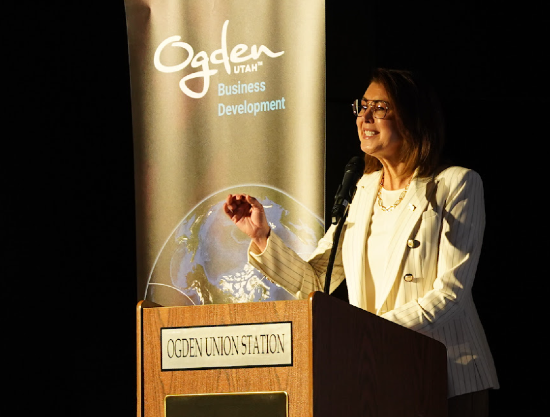
Utah Lieutenant Governor Deidre Henderson also welcomed the audience and praised Utah’s collaborative spirit: “This is a great example of who we are here in the Beehive State. We work together, we build things. We build people. And I’m really grateful for all of you.” She highlighted Utah’s uniquely connected aerospace and defense ecosystem, adding, “It’s not just aerospace and defense—we work together in so many beautiful ways in our state that is unparalleled anywhere else I visit.”
A Legacy Forged in Propellant
Utah’s unique geography and manufacturing capabilities attracted the Air Force early on, establishing the state as a cornerstone of aerospace. Thiokol, Hercules, and later Northrop Grumman helped build a foundation that still fuels Utah’s economy today.
“If you were to remove Hill Air Force Base from northern Utah, it would take 15 years for the economy to recover,” said Aaron Starks, President and CEO of 47G “That’s not hyperbole—it’s economic reality.” The base contributes $4 billion in payroll and supports hundreds of companies, making it a regional engine of prosperity.
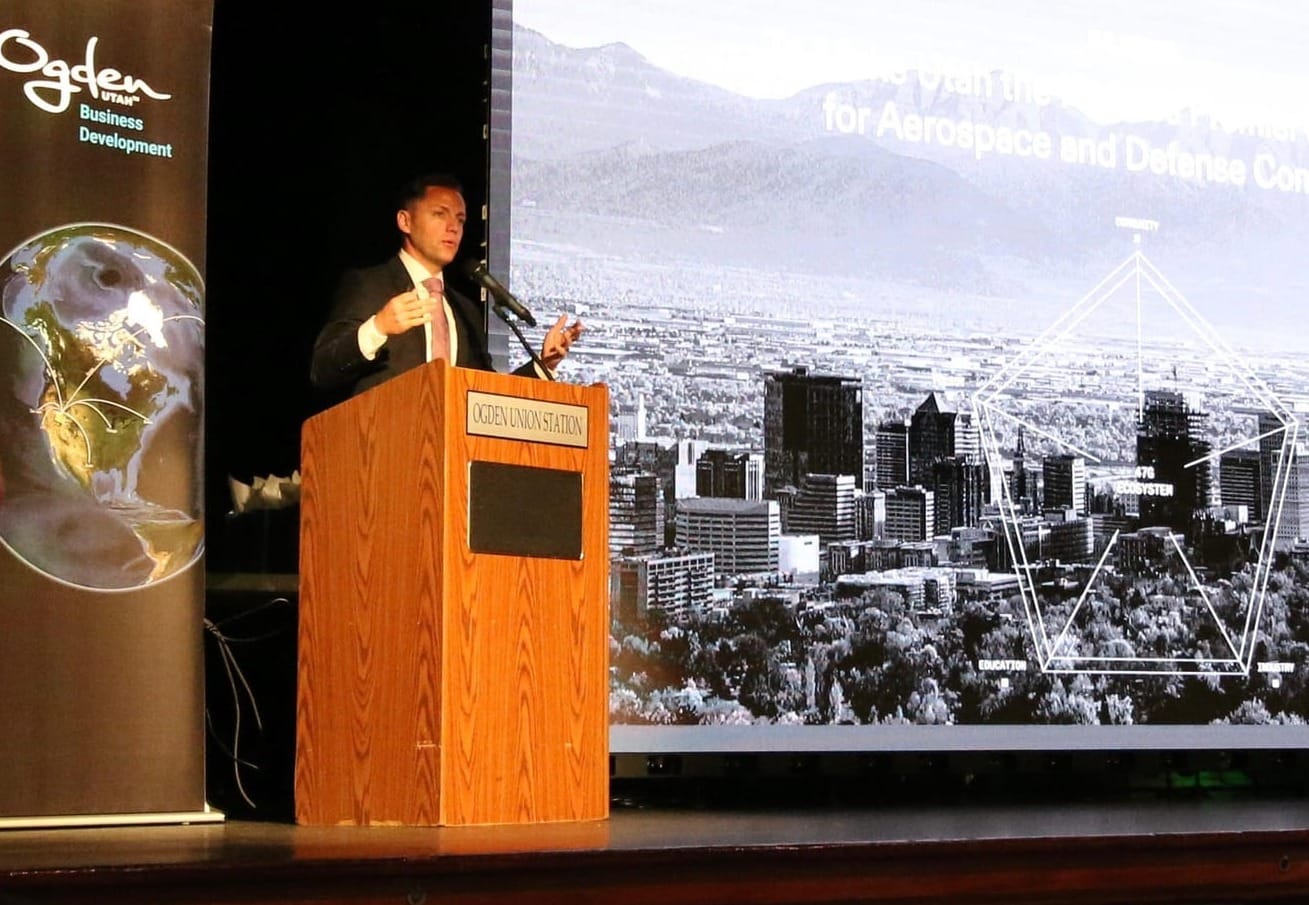
Starks expanded on Utah’s legacy: “We were building solid rocket motors and manufacturing propellant before Hill Air Force Base even existed. It was our manufacturing capabilities that helped bring the Air Force here in the first place.”
That foundational expertise continues to shape the region’s identity. “Hill is the center of gravity for advanced manufacturing, advanced materials, and aerospace engineering in this state. Hundreds of companies depend on it.” He added, “That’s why our mission is so urgent. We’re not just preserving jobs. We’re preserving innovation, infrastructure, and the identity of an entire region.”

47G: A Four-Pillar Strategy for Growth
47G is both an industry association and a development engine. With an affiliated 501(c)(3) institute, it helps Utah companies secure federal contracts, capital, and customers. In the past year, 47G facilitated $7 million in contracts and helped raise $5 million in startup capital. Its growth strategy is built on four pillars:
- Industry – Linking defense giants like Northrop Grumman, BAE Systems, Boeing, and Lockheed Martin with Utah-based suppliers.
- Academia – Collaborating with all Utah colleges and universities, including key leaders like UVU’s President Astrid Tuminez.
- Government – Shaping pro-growth policies with state officials.
- Capital – Expanding access to patient, hardware-savvy capital.
Strategic Priority 1: Advanced Air Mobility
Project Alta positions Utah at the forefront of Advanced Air Mobility (AAM)—deploying electric and hybrid aircraft to reduce traffic, emissions, and delivery time.
“We can take people from Salt Lake to Moab in 42 minutes,” said Starks. With support from UDOT and Beta Technologies, infrastructure is being laid to enable regional, sustainable air transport. UPS is exploring air taxi integration for rural logistics.
Strategic Priority 2: Space Economy
Utah’s high elevation and open airspace give it an edge in aerospace testing and launch. 47G and UDOT are partnering to establish a Utah spaceport. Interest from venture firms and national players continues to grow.
“Utah is at the heart of the new space economy,” said Starks. “And we’re not just building launchpads—we’re building ecosystems.”
Strategic Priority 3: Critical Minerals
With 40 of 50 DOD-prioritized critical minerals found in Utah, the state is key to national supply chain resilience. 47G, in partnership with World Trade Center Utah and the Utah Mining Association, is advancing mineral extraction and innovation.
For more information about 47G and Critical Minerals, see TechBuzz coverage of 47G's December 2024 Critical Minerals Summit.

News from Hill AFB
Colonel Meghan Szwarc shared highlights from a transformative year at Hill Air Force Base, noting significant operational milestones and future-forward initiatives. Colonel Szwarc is the Deputy Commander of the 75th Air Base Wing at Hill Air Force Base. The wing provides installation support for the Ogden Air Logistics Complex, two fighter wings, and 50 other associate units, totaling more than 27,000 members consisting of active duty, civilian, and contractor personnel.
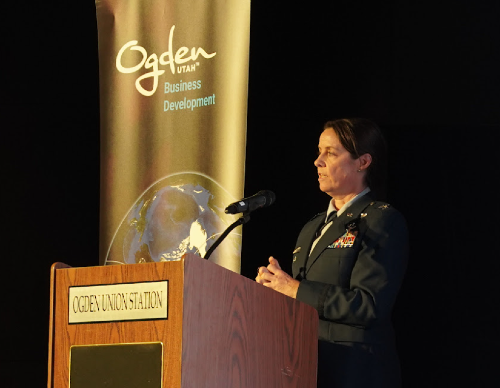
Planning is already underway for the 2026 Hill Air Show, which aims to attract half a million attendees in celebration of America’s 250th anniversary. The team continues to build on the success of the 2022 and 2023 shows, which remain among the Department of Defense’s largest, most well-executed public events.
In response to a wave of new executive orders from the federal administration, Hill AFB is rapidly implementing several workforce and operational changes. Among the most visible to the local community is the return-to-office mandate, shifting remote workers back to on-base operations. While this transition enhances collaboration and accountability, Colonel Szwarc acknowledged the resulting strain on traffic patterns and expressed appreciation for the community’s patience as adjustments are made.
The base is also participating in the Deferred Resignation Program (DRP), a voluntary separation initiative designed to optimize the federal workforce. Two rounds of the program have been implemented, allowing civilian employees to opt into early leave while retaining full pay through fall or year-end. A civilian hiring freeze remains in effect, though mission-critical positions continue to be addressed through exemptions.
Meanwhile, Hill’s Enhanced Use Lease (EUL) program continues to gain traction. Projects like the Tru Hotel, Jimmy John’s, and Starbucks near the West Gate, as well as the Falcon Hill office complex, exemplify successful public-private partnerships. A new building is also being planned to replace outdated 1940s-era facilities adjacent to the gate.
Infrastructure improvements are underway with the construction of a new gate on the northwest side of the base, near the 5600 South exit on I-15. The new entrance—expected to ease peak-hour congestion—will connect directly to the installation via 1800 North, contingent on proper base credential checks.
Colonel Szwarc also highlighted the Sentinel program’s continued expansion, which is driving significant construction activity and is projected to support 1,800 on-base and 5,000 industry-side jobs. In parallel, the Air Force has authorized a new T-7 maintenance complex on the east side of the base. Construction is expected to begin in 2026 with completion by 2028.
Finally, Hill AFB’s fighter wings remain active globally, with deployments across CENTCOM and PACOM theaters. The base’s munitions hub—nicknamed the “Amazon fulfillment center for munitions”—has completed numerous shipments in support of these efforts.
“It's been an exciting and demanding year,” Colonel Szwarc concluded. “But what truly makes Hill thrive is our community. Your innovation and support continue to strengthen our mission and our nation.”
Hill AFB's Digital Depot and Strategic Mission
Colonel Michelle “Mickey” Artolachipe, Deputy Commander of the Ogden Air Logistics Complex (OO-ALC) at Hill Air Force Base, shared a view into Utah’s critical role in national defense and aerospace innovation.
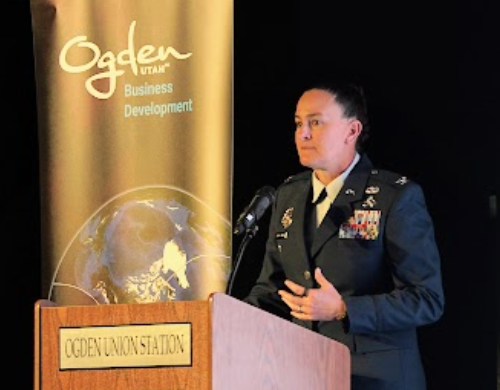
She noted that while violent extremist organizations remain a concern, “we are now entering an era of intense strategic competition. There are those who seek to disrupt international norms and weaken American influence.” Artolachipe emphasized that the U.S. does not seek conflict, “but when the fight comes, we’re ready to win decisively.”
OO-ALC, the largest employer at Hill AFB with nearly 7,000 employees—most of them civilian Airmen—handles depot-level maintenance for nearly every weapon system in the Air Force. “We do our wartime mission every day,” she said. “The aircraft and parts we work on go directly to warfighters engaged in live operations.”
Looking forward, Artolachipe highlighted the base’s ambitious modernization plan, including the creation of a “Digital Depot”—an integrated Industry 4.0 ecosystem that unifies maintenance, logistics, and operations. Key initiatives include VR- and AR-based workforce training, automated warehouse systems, sensor-enabled industrial equipment, and upgraded Wi-Fi infrastructure across the campus.
She stated, “We’re investing nearly $11 billion in military construction and modernization efforts to support a workload that’s expected to grow by more than 30% over the next 20 years.” The base is building new facilities to support sustainment of both current and advanced platforms.
Hill AFB will continue supporting the F-16, F-35, and Minuteman III while ramping up capabilities for future systems like the B-21 Raider, Sentinel ICBM, T-7 Red Hawk, and KC-46 Pegasus. “We’re building the facilities and infrastructure needed for fifth-generation and advanced platform sustainment,” said Artolachipe. “The future is bright for the depot—and for Utah’s role in national defense.”
Readiness and Morale: Kevin Sullivan’s Outlook
Kevin Sullivan, Executive Director of Utah Defense Alliance, addressed urgent Air Force needs: Block 4 F-35s, the B-21 Raider, and a modern air-to-air missile, among other weapons platforms. He noted pilot shortages and underfunded spare parts as readiness barriers.
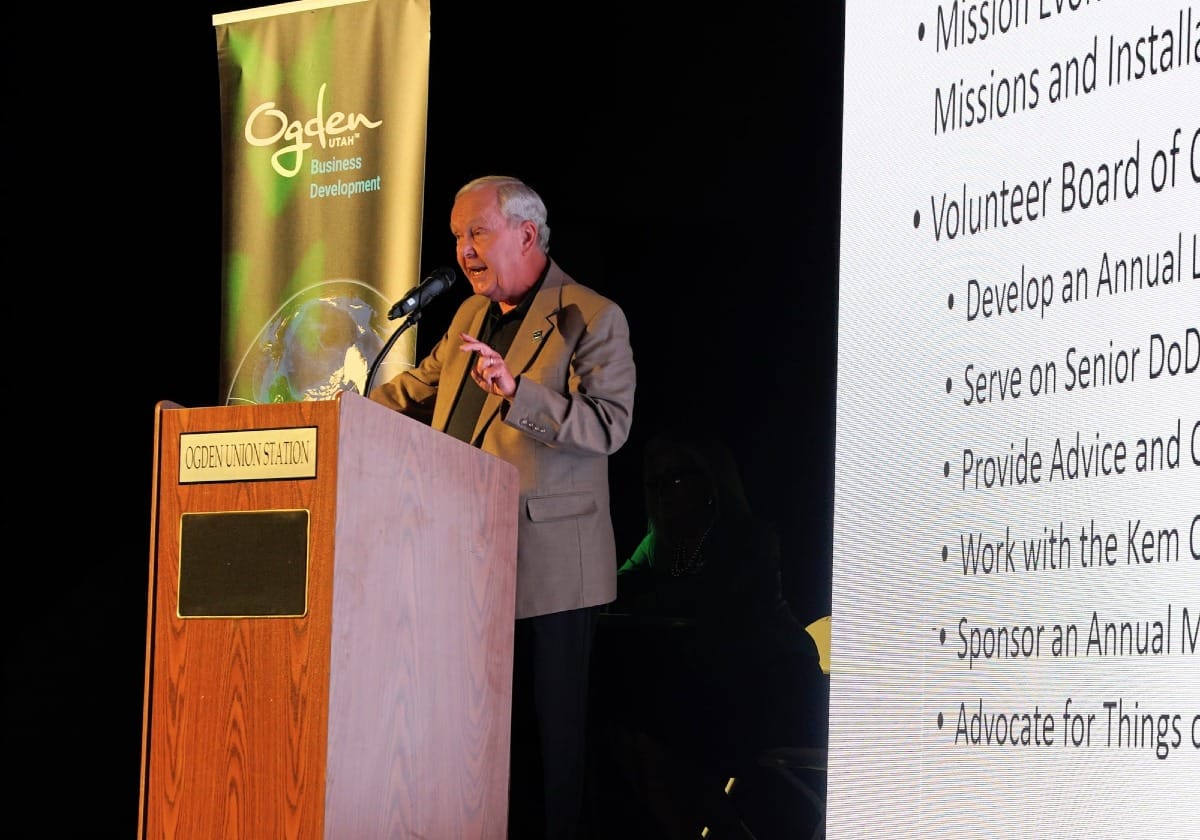
Sullivan also highlighted morale issues at Hill Air Force Base tied to hiring freezes and civilian uncertainty. “Try to fight a war without our depots—you can’t,” he said, stressing the importance of Utah’s civilian workforce.
Despite challenges, Sullivan sees Hill AFB as a long-term asset with four anchor pillars: the Ogden Air Logistics Complex, 388th and 419th Fighter Wings, the Utah Test and Training Range, and the ICBM Systems Directorate. The base alone drives $10 billion of Utah’s $22 billion defense economy—nearly 8% of state GDP.
Perspectives from the Primes: Workforce and Innovation
In the “Perspectives from the Primes” panel, leaders from Boeing, BAE Systems, Northrop Grumman, and LSI discussed talent, supplier partnerships, and emerging tech.

Northrop Grumman employs 10,000+ in Utah (10% of the company's total workforce) and prioritizes STEM pipelines, engineers and supply chain admins. Panelists emphasized the need for skills in systems engineering, composites, cybersecurity, supply chains, and AI/ML. Partnerships with Talent Ready Utah, Weber State, the University of Utah, and technical colleges were praised, including the Utah Aerospace Pathway program for high school students are exploring careers in Aerospace and Defense.
Recruitment hurdles—like Utah’s lack of locality pay—make attracting out-of-state workers harder. Retention, they said, hinges on flexibility and competitive benefits.

Advice to local companies: “Invest in your people, build collaboration skills, and meet supplier standards like AS9100.” Utah is poised to lead in advanced composites, AR/VR, hypersonics, and model-based engineering.
Zero Gravity: Utah’s Largest Aerospace Summit
This November, 47G will host its Second Annual National Technology Summit, Zero Gravity, at the Salt Palace Convention Center. An estimated 3,000–4,000 attendees will explore:
- Advanced Air Mobility
- Defense Innovation
- Space Technology
- Clean Energy Systems
Last year’s summit, with over 750 attendees, featured global primes, national security leaders, and ambassadors. TechBuzz covered the inaugural event here. “We’re convening, promoting, and advocating for the future,” said Starks. “And Utah is ready.”
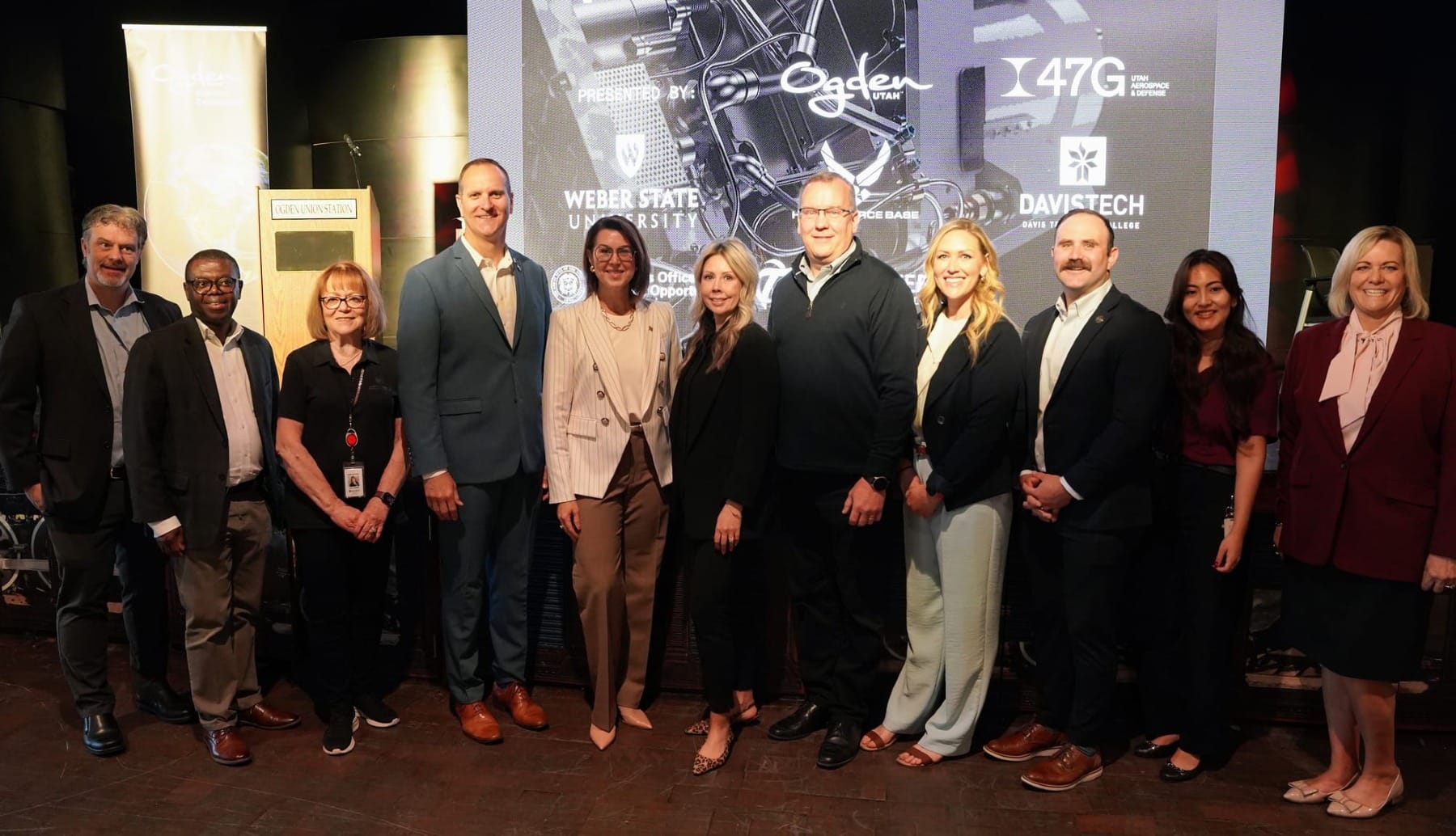
Acceler8 Wasatch 2025 continues today and tomorrow. It includes APEX Accelerator Defense matchmaking and workshops, a novel "speed-dating" approach to relationship-building between Aerospace & Defense-oriented entrepreneurs and defense agencies/prime contractors.

